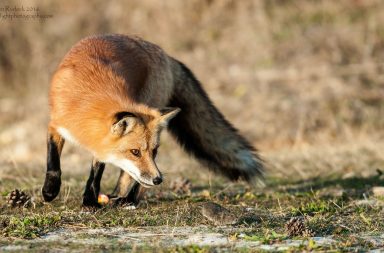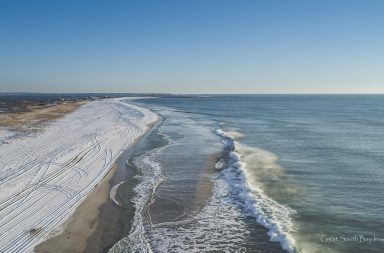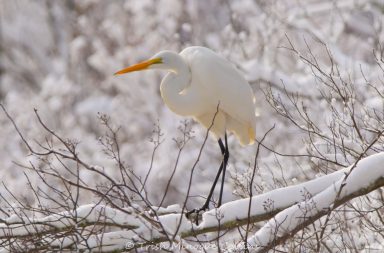By Diana Poulos-Lutz
Yesterday evening, I heard of a sighting of a Brown Booby at Nickerson Beach. The Brown Booby is a tropical shorebird that rarely visits either the West or East Coast of the United States. Nobody knows exactly why this these birds occasionally stop on land, their only known nesting area in the Northern Hemisphere is off the coast of Florida in the Dry Tortugas. The only other known nesting area in the United States is Hawaii! A couple of theories that I have read is that a possible storm may instigate the northerly flight of this bird, or that their internal compass, or GPS, becomes dysfunctional. My love of the ocean, and of shorebirds, inspired me to drop what I was doing and to take a drive to Nickerson, despite the poor weather conditions.
As soon as I arrived at Nickerson, the fog was so dense that it was difficult to see much of anything. Although I could not see too far into the distance, the Terns made their presence known, as they swarmed aggressively around me with their loud noises. As I continued walking west, I could faintly see a group of birders in the distance with their scopes and cameras. When I reached the group, the fog was still dense, but I could see the Brown Booby sitting on top of a Plover enclosure. All of the admirers of this rare sighting were at quite a distance away, out of respect, and also since the Brown Booby was far into the tern and plover space. This bird was certainly a “lifer” for most of us there.
During my time observing this interesting bird, the terns made it clear that the Brown Booby was not a welcome visitor. They continuously “dive-bombed” the Brown Booby. Of course, this is normal Tern behavior when protecting their territory. Yet, the Brown Bobby stayed seated atop of the Plover enclosure during the time in which I was there. Most of the time, it kept its head tucked into its body. Before I left, the fog lifted somewhat, and I was able to capture a few photos of the Brown Bobby looking around. This morning, I awoke to news that the Brown Booby was deceased. The Brown Booby rarely spends time on land, as it spends most of its life in the ocean. So, its time atop of the Plover enclosure was not typical Brown Booby behavior. The Brown Booby had lost its way, but I’m grateful that some Long Island birders took the time to admire its short visit to Long Island.
Cover photo and additional images by Long Island Wildlife Photography member John Giglio- captured off San Juan Puerto Rico.


More photos from John Giglio of a Brown Booby in it’s normal tropical habitat on page 2




